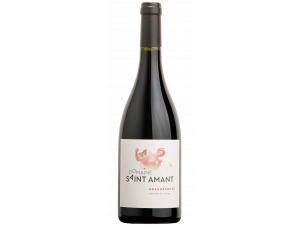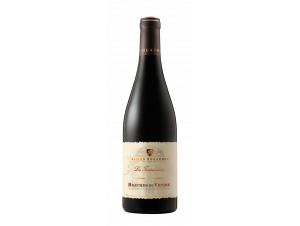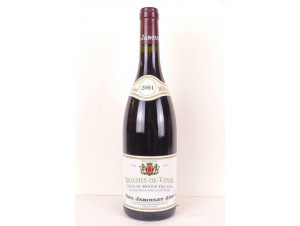You have no items in your shopping cart.
Wine Beaumes-de-Venise
-
Top Selling-31%
-
Top Selling
-
Top Selling
The Beaumes-de-Venise appellation takes its name from the Papacy
There are traces of viticulture in the region since ancient times. Rhone wines were cultivated throughout the Middle Ages, and the Popes residing for centuries in Avignon knew how to take advantage of this wonderful terroir until the French Revolution. In the 19th century, the phylloxera crisis brought about a revival following the almost complete destruction of the vineyard, which thus experienced a new boom at the beginning of the 20th century.
The AOC Beaumes-de-Venise takes its name from the numerous caves in the region, called "balmes" in Provençal, which are very well known in the commune of the same name, Beaumes de Venise. The term "Venice" does not designate the Italian city but comes from the term "Comtat Venaissin", a term designating the possessions of the Popes, who as we mentioned above, were based in Avignon. "Venice" would therefore be a deformation of the term "venisse", nothing to do with gondolas, even if this name gives the appellation a somewhat romantic image!
The appellation today covers the towns of Beaumes-de-Venise, La Roque-Alric, Lafare and Suzette, and is bounded by the town of Avignon to the north-east.
Prestigious soils serving the culture of Beaumes-de-Venise
This vineyard has a particularly steep terroir, and therefore extends over different levels of terraces that are called "restanques" or "faysses". The soils are predominantly sandy-clay and chalky-clay. The different layers of the subsoil are composed of soils dating from the Triassic, Cretaceous White Earths and Jurassic Grey Earths, which locally influence vine growing:
The Triassic soils are mainly present around the town of Suzette, one can even find deposits of these very old soils (dating from the secondary era) on the surface, due to the compression phenomenon known as the "Suzette Diapir", which is found exclusively in the Rhone Valley. Shallow in nature, these soils allow for good vine growing, without water stress. The soil is fine and ochre, which indicates the presence of iron. In times of drought it becomes very hard, but remains porous thanks to the many cracks that form on its surface.
The Terres Blanches du Crétacée are mainly located around the commune of La Roque-Alric, and are composed of clay, limestone and marl. There, the vines must weave long roots to extract the maximum amount of minerals, which they need to develop, grow and produce grapes. These fertile soils also get a lot of sunshine, as they are planted in terraces.
The Jurassic Terres Grises are located north of Lafare, against the Dentelles de Montmirail massif. These soils are mainly composed of black Oxfordian marl, which in turn contains clay, sand as well as silt.The sunshine is optimal here, and the mountains protect the vines from the mistral, which allows for a gentle ripening of the grapes during the summer.
The climate is warm Mediterranean, locally cooled on the vineyards planted in altitude. Rainfall is infrequent, even in winter, and temperatures are very mild in the cooler season, but can be very high in summer.
The wines produced are exclusively red in colour, and made from at least 50% Grenache noir and 25% Syrah. Other grape varieties of the appellation such as Mourvèdre, Carignan, or even Cinsault are allowed up to 20%. Finally, white grape varieties are also authorised (10% maximum), and thus allow producers to express a certain originality. The grapes must be harvested by hand, a guarantee of quality and respect for the berries, as well as for the soil, which is very steep and would not allow the passage of machines.
The vineyard covers a total area of 660 hectares, producing around 22,000 hectolitres per year. The planting density is referenced on average around 4,300 vines per hectare, giving an average yield of 32 hectolitres per hectare.
Let yourself be seduced by the profusion of flavours that Beaumes-de-Venise offers
To the eye, the wines are a beautiful deep purple colour. The depth of colour marks the density of these particularly fleshy and rich wines. The brilliance of these wines is very intense.
On the nose, the aromas are mainly fruity (cherry, blueberry, blackcurrant) and complex.The nose is often very expressive, marking the generosity of these wines. Spicy and liquorice notes are also present in most wines of the appellation.
The palate offers a beautiful fresh tannic structure, built on generous, ample and warm aromas of ripe fruit and aromatic herbs. The persistence is very long. These wines are loaded with alcohol, which allows them to age for a few years and evolve into rounder notes, with softer tannins. The Grenache mainly brings aromas of red fruits and liquorice, the Syrah on the other hand guarantees the colour and the ageing potential. The most complex wines usually contain Mourvèdre, which brings aromas of black fruits, leather and undergrowth.
The great vintages of the Beaumes-de-Venise appellation
The 1998, 2000, 2001 and 2005 vintages are considered the finest successes of this terroir. More recently, the 2009, 2010, 2011 and 2012 vintages are very good years, promising great discoveries.
What to eat with a Beaumes-de-Venise?
AOC Beaumes-de-Venise wines go perfectly with red meat dishes from the south of France such as beef stew. Game dishes such as rabbit stew are also well suited to these wines. On a slightly more original note, it is also interesting to cook curry-based dishes to match the wines of this appellation, which will also go very well with a chocolate-based dessert.
The domains to discover in the Beaumes-de-Venise appellation
Domaine De Cassan Tradition
Domaine de Cassan is owned by the Croset family, where the founder and his sons work the vines to make several cuvées, including the Tradition cuvée. The vines are between 4 and 40 years old, and cover 19 hectares. The traditional grape variety of the AOC is 65% Grenache, 20% Syrah, 10% Mourvèdre and 5% Cinsault.Domaine des Bernardins
The Castaud family is now at the head of this property, which was previously in charge of the Bernardins. Elizabeth Castaud now runs the estate, succeeding her ancestors, with the help of her husband and son. The property respects its terroir to the highest degree: the work of the vine is manual and without any pesticides.Clairette-de-Die
Côtes du Rhône Villages Suze-la-Rousse
Côtes-du-Rhône Villages Sainte-Cécile
Côtes-du-Rhône-Villages Chusclan
Côtes-du-Rhône-Villages Laudun
Côtes-du-Rhône-Villages Massif-d'Uchaux
Côtes-du-Rhône-Villages Plan-de-Dieu
Côtes-du-Rhône-Villages Rochegude
Côtes-du-Rhône-Villages Sablet
Côtes-du-Rhône-Villages Séguret
Côtes-du-Rhône-Villages Signargues
Vin de Pays des Collines Rhodaniennes
Vin de Pays des Collines Rhodaniennes

























 TWIL - Achat de Vin
TWIL - Achat de Vin


